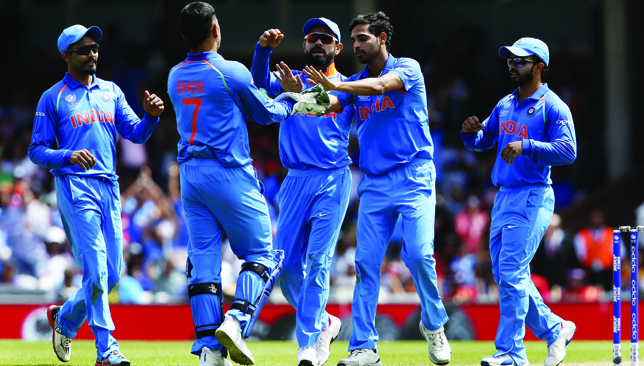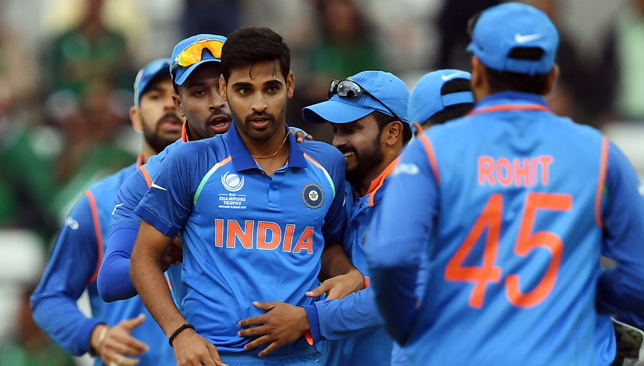
One-day cricket has changed. With 300 being the norm, and 320 often the par score nowadays, this is a universally accepted fact. Even so, England remained the last bastion wherein the 50-over game still retained some of its old charm. Despite batting friendly wickets, you simply couldn’t go slam-bang from ball one. It is a trait seen in many an innings during this 2017 Champions Trophy.
Almost every team, be it England, South Africa, India, Australia and so on, they have looked to save wickets until the middle of the innings, and then hoped to change gears. Perhaps the only team to not follow this norm is Sri Lanka, underlined by the manner of their 322-chase against India at the Oval on June 8. They had tried this same approach against South Africa a few days prior, and failed. They succeeded against India because they were adventurous throughout the innings, almost a freak phenomenon.
Lanka scored 87/1 in the first 10 overs against South Africa, and then 44/1 against India, playing with a longer vision. This, though, isn’t about their batting exploits. Instead, it is about how that assault on their attack changed the Indian team’s outlook on bowling strategy for this tournament. Yes, the obvious differentiation to their next must-win game against the Proteas was the inclusion of R Ashwin for a first time in this competition.
The bigger point of distinction was when Virat Kohli decided to leave out one of his three pacers – Umesh Yadav, who had experienced an off-day against Lanka with figures of 0-67 (from 9.4 overs). The Indian skipper then had the option of handing the new ball to Hardik Pandya or Jasprit Bumrah. The former could have made a good option, given his struggles with the older ball in the middle overs. Instead, Kohli chose the latter, in a bid to deploy his own team’s strategy in the first ten overs albeit in reverse.

Bhuvneshwar Kumar (C) celebrates the dismissal of Bagladesh’s Sabbir Rahman.
Containing runs has become the mantra for team India, as seen in the games against both South Africa and Bangladesh. “The idea is to bowl restrictive lines. The batsmen will still find ways to score, so it is important to change the lengths when there is no swing available. The idea is always to take wickets, but the par scores nowadays are 300. If we build up adequate pressure with the new balls and restrict scoring, we can get wickets later to restrict the scoring as well,” opined Bhuvneshwar Kumar, after India beat South Africa comfortably.
The lack of swing has made headlines in this tournament for a variety of reasons. The make of Kookaburra balls is now different, the wickets are harder and conditions haven’t really supported any lateral movement. This is the key reason for Kohli to have a rethink about how he wants to balance his five-pronged bowling attack. Slotting in Bumrah as the opening bowler, along with Kumar, has been pivotal in that sense.
Strangely enough, Bumrah doesn’t open the bowling too much for India, especially when there are three full-time pacers in the playing eleven. His role is more defined for the middle and death overs. For obvious reasons, as the presence of Yadav, Bhuvneshwar Kumar and Mohammad Shami allow the Indian team to strengthen other areas. But with Yadav replaced, Bumrah was handed the new ball, and he didn’t buck away from the challenge at hand, returning figures of 2/28 and 2/39 in the last two matches.
“You can’t just be labelled as ‘death bowler’ or a swing bowler. Whenever you’re given the ball, you’ve to contribute. The aim is to stick to a plan and execute it,” said Bumrah after a man-of-the-match performance against South Africa. Against Bangladesh, he brought out the toe-crushing yorkers with aplomb. “The ball was reversing a bit today and that really helped us contain the runs,” he said, after India won the semi-final in Birmingham.
Together with Kumar, against South Africa, he had tied down Hashim Amla and Quinton de Kock in the first 10 overs. The duo did manage to put on 76 runs for the opening wicket, but South Africa were so behind the curve by that point, they self-destructed in search of acceleration thereafter.
The Bangladesh game was an obvious follow-up for this new ball pairing. While Kumar strangled the scoring at the top with two wickets, Bumrah returned later on to squeeze the lower order. Despite losing their way in the middle, it seemed as if Bangladesh were on track to breach 290 still. Instead, the Indian duo applied further brakes on the scoring and restricted the Tigers to a non-challenging total.
“After the Sri Lanka game, their lengths have been impeccable. They are so consistent, bowling close to the batsmen and always creating an opportunity to get a wicket. The opposition knows this, so they are always careful about going hard against these two guys,” said Kohli on Thursday, almost firing a warning shot to the Pakistan batsmen ahead of the big final on Sunday.